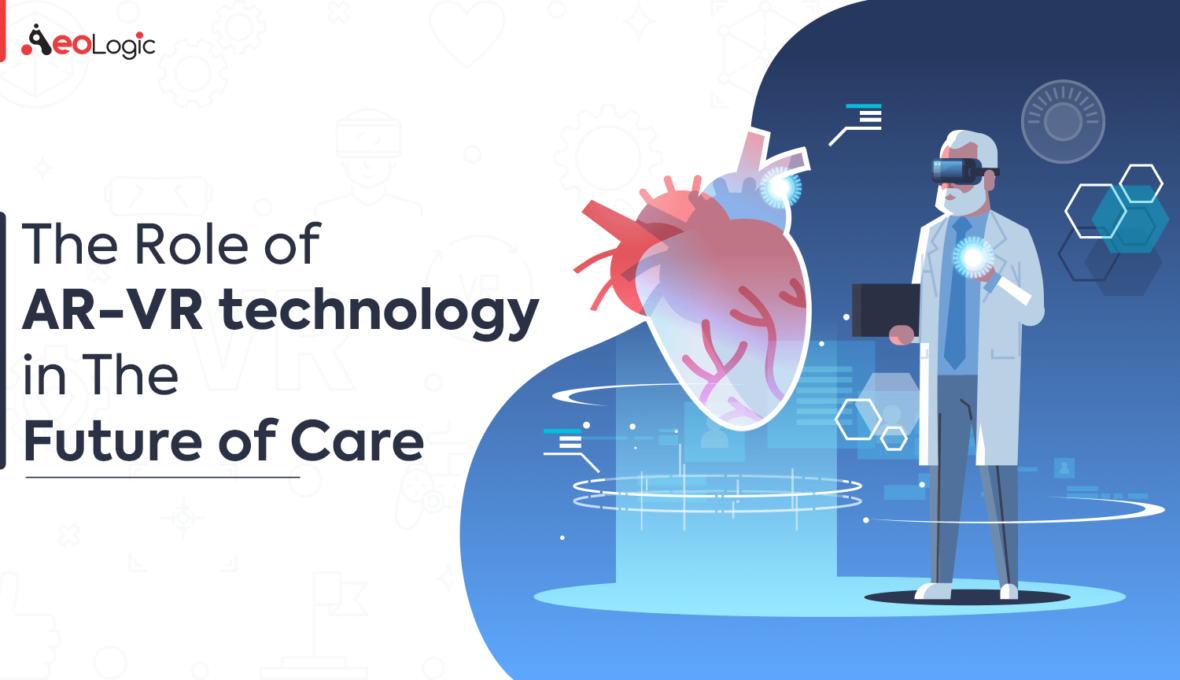The effectiveness of the healthcare system entirely relies upon cutting edge solutions these days. Although it is a known fact that most of the advanced medical solutions are somewhat entangled with several unseen challenges like–limited availability of medical equipment, trained medical professionals, and more. With limitations dominant from nearly every angle like–Availability, Accessibility and Affordability, the healthcare industry, as a result, is always in a disarray. And, which ultimately leads to the excessive use of traditional medical equipment that is way too costlier and less accurate as compared to the advanced ones.
The solution to these problems is not heavy funding or re-innovation of hospital tech support but is setting up cost-effective and reliable technological standards. That is both affordable and accessible by the hospital staff. AR and VR or Augmented Reality and Virtual Reality are two such technologies under the Artificial Intelligence umbrella that are breaking grounds in terms of both these standards.
Use of AR and VR in the Healthcare Sector-
Improved patience experience
Augmented reality can significantly improve the overall patient experience, especially in the case of chronic patients who are experiencing discomfort when it comes to going through a certain procedure. Whereas VR can be used in multitudes of different ways. Medical Practitioners can use VR to practice complicated surgeries and patients experiencing trauma can experience certain virtual scenarios that can help expedite their healing.
Body Mapping and Interactive Patient Experience
When it comes to visualizing patient data, Augmented Reality plays a major role there. AR has so far been successful in calculating the possibility of live stats on the basis of collected patient data. To be more clear, AR eliminates the need for multiple machines required for accessing patient data and directly points out the problematic areas further saving both time and money.
Body mapping is one such great use case of Augmented Reality and Virtual Reality, as the combination helps doctors in recreating patient’s body which was previously a prolonged and complicated task. The body areas that were previously inaccessible even after a physical examination, AR and VR recreates the patient’s body map efficiently and in far lesser time as compared to the traditional body mapping methods.
“VR has the potential to evaluate the dose distribution in 3D in an intuitive way, saving planning time with potentially greater precision and fewer side effects of the treatment.”- Philips
Risk assessment and Advanced Diagnostics
It’s a known fact that diagnostics is a critical area which majorly only relies on close assessments and precise results. Even the slightest missed detail, can lead to a wrong diagnosis which is where AR fits appropriately. With AR, doctors can detect, prevent and treat the majority of diseases by conducting a careful analysis of layers of the patient body (through sensors), which further helps in giving a more certain and detailed diagnosis.
Surgery Assistance
One of the most exciting use cases of AR is surgery, as doctors can practice complicated surgeries in different set scenarios. This not only reduces the costs of medical training but also improves surgery accuracy rate. UAE is one country that actively trains its medical practitioners for surgical procedures with the assistance of AR and VR.
Final Words
The future of AR and VR in healthcare is a win-win for the years to come. Even during the pandemic, multiple hospitals and medical institutions have used AI to detect susceptible patients. AeoLogic works actively with companies in both the public and private sector and helps them in identifying disruptive solutions for their business. Connect with us for a quick consultation.






